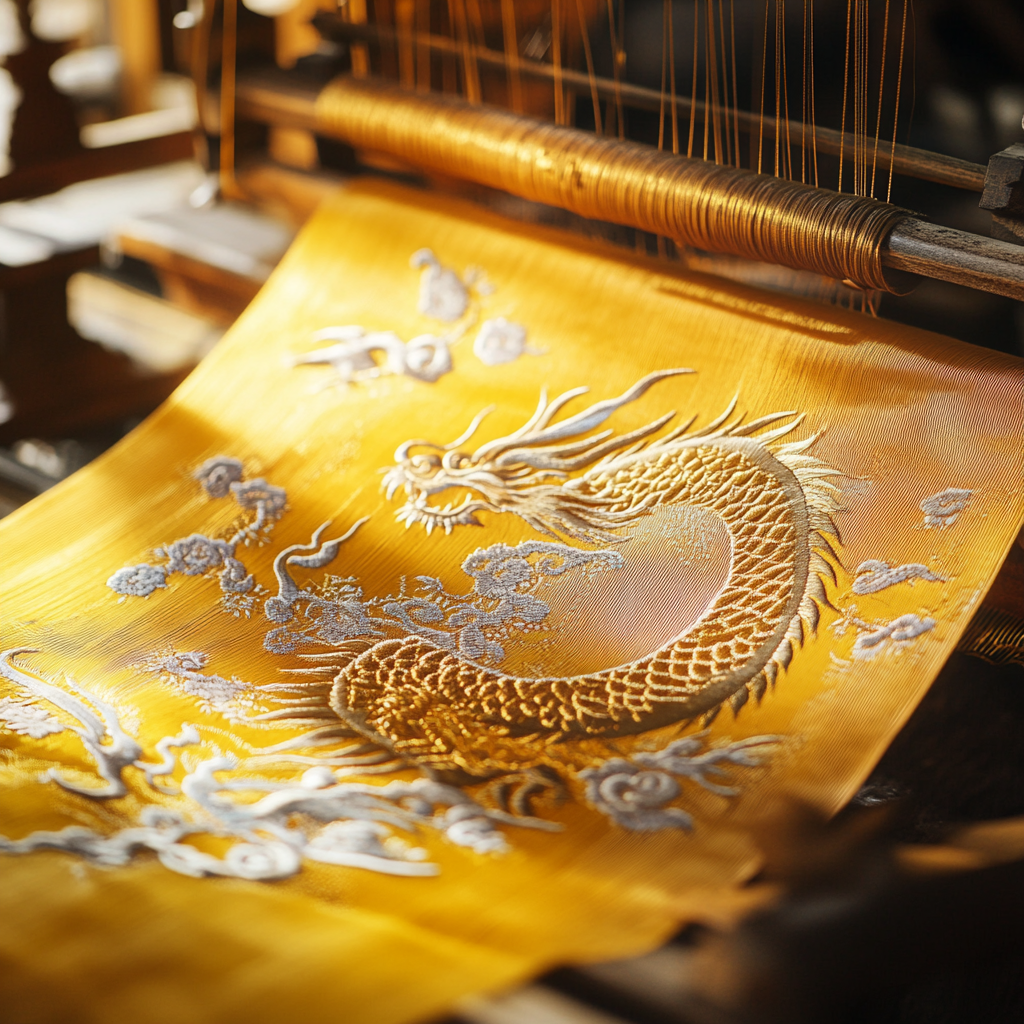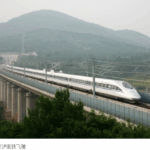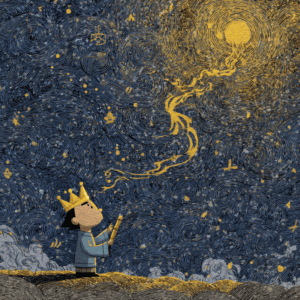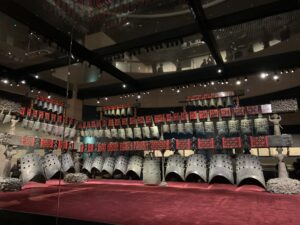这篇文章的灵感来自纪录片《寻色中国》第一集「黄色」篇章。
以苏州织造流转千年梦境,织出光与土之间的永恒诗篇,致敬中华文明中最温暖的色彩。
苏州丝织的柔韧与光泽,在高铁飞驰之间,再次发出低语。
黄色,是土地的根,是文明的肤,是日光掠过织机时的一声轻响。
在京沪高铁飞驰的速度中,苏州站宛如一枚静谧的绣针,将古老的织造记忆,缝入现代的脉络之中。
从一缕光,到一匹绢,千年的时光在指尖缓缓流转。
《流光织造》由此而生。
如果世界有最暖、最温柔的颜色,那一定是黄。
黄,是光之首,是土之色,是天地初分时,光亮在大地上洒下的第一道光点。
在《说文解字》中,“黄”,是江水光照大地而成的颜色,为光照之色,是埋藏着光明与生命力量的温暖之色。
在中国文化里,黄,是五方正色之一,代表中央,象征大地,连接东西南北的心脉。
黄土,养育了千营万落;
黄河,流过中原,留下了历史的痕迹。
起初,黄色在上古文明中,就是合天地之归心;随着秋季的到来,黄色也成为中华文明中最契合中心转换的色彩。
在江南水乡,有一缕光,是丝线织出的时间。
苏州织造,起于明代,盛于清世,作为皇家直属的织造局,肩负着为皇宫织就龙袍、朝服与贡品丝缎的重任。绫罗绸缎间,藏着的是江南最细腻的匠心,最华贵的审美。妆花如云,缂丝如画,宋锦如诗,每一寸织物,都是时间与技艺交缠的回响。
这里不仅是丝绸之都,更是礼制与审美的合一之地。龙纹缂丝,织的不只是锦缎,更是天子的威仪,盛世的温柔。
苏州织造,是织在衣上的江南,是盛世之下的一抹风雅。它将一城烟雨、一段丝路、一缕工艺,织成中国最柔韧也最耀眼的文化标识。
它不仅为皇宫而织,也为千年江南留下了一张永不褪色的名片。
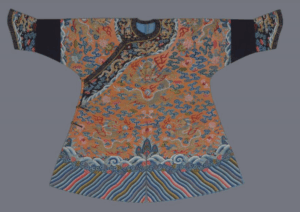
图片来源:故宫博物院
在《红楼梦》里,黄色,是藏在最温柔、最远征相思中的一抹光。
薛宝钗一身蜜合与葱黄色,藏着清淡精致与内敛的气息。
在红楼梦里第八回,宝玉看宝钗:
蜜合色棉袄,玫瑰紫二色金银鼠比肩褂,葱黄绫棉裙,一色半新不旧,看去不觉奢华。……………(宝钗)一面解了排扣,从里面大红袄上将那珠宝晶莹黄金灿烂的璎珞掏将出来。
蜜合色,介于蜂蜜与琥珀之间,色泽温暖而柔和,带有淡淡的中性色调。
在《红楼梦》中,曹雪芹以色写人,尤为细腻。薛宝钗常着黄色系衣物,如蜜合色、葱黄等,反应她性格中的稳重、温婉、内敛与持重。黄色于她,不张扬,却自有分寸之美,宛如一抹柔光,静静照亮她的人格边界。
在中国传统节气中,黄色常被视为季节转换的代表色,尤其与春季和秋季密切相关。春日的嫩芽、秋日的稻穗,都呈现出黄的不同层次。
秋分时节,稻谷成熟、田野金黄,是中国农民庆祝丰收的重要时刻,也被定为“中国农民丰收节”。在春秋交替之间,黄色不仅反映了自然界生长与成熟的节奏,也承载了人们对土地温润、万物有序的理解与尊重。
今日,花一程时光,踏上京广高铁,一路南下,抵达苏州站。
这座车站,仿佛一缕细黄的丝线,纯纯地绘着一段最温暖的时光。
黄,不只是大地的颜色,也不仅是光的色调。
它是在光与土之间,给予世界的一场温柔期盼,
如同回忆,如同希望,
也如同,一场长长的、缓缓流淌的光。
苏轼 《轼以去岁春夏,侍立迩英,而秋冬之交,子由》
曈曈日脚晓犹清,细细槐花暖欲零。
坐阅诸公半廊庙,时看黄色起天庭。
译文:
晨曦中阳光微弱,天空尚且清冷,细小的槐花在温暖中缓缓飘落。
坐在廊庙之间,静看群臣聚集,偶尔抬头,便见一片祥瑞的黄色在天庭升起。
这首诗描绘了清晨朝堂的肃静与庄严,借黄色祥云寄托对政通人和的期望。黄色在天庭升起,不只是色彩的描写,更象征着盛世的期许。
资料来源:轼以去岁春夏,侍立迩英,而秋冬之交,子由
歌曲 《流光织梦》|黄色 · 苏州织造
Sie sehen gerade einen Platzhalterinhalt von YouTube. Um auf den eigentlichen Inhalt zuzugreifen, klicken Sie auf die Schaltfläche unten. Bitte beachten Sie, dass dabei Daten an Drittanbieter weitergegeben werden.
Mehr Informationen京沪高铁
京沪铁路与京沪高铁简介|南北大动脉的穿越之旅
京沪铁路是中国连接北京市与上海市的重要铁路干线。北起北京站,南至上海站,正线全长1318公里,是一条承载客货运输的重要南北通道。
沿线地区经济发达,文化底蕴深厚,自然与人文景观交相辉映。京沪铁路不仅支撑了南北物资运输,也是旅游和城市间交流的重要纽带。从黄河、淮河到长江,这条线路穿越了华北、华东最富饶的土地,是中国最繁忙的传统铁路干线之一。
随着运输需求的不断增长,京沪铁路面临运输能力饱和的问题。为了缓解压力并提升速度,中国启动了京沪高速铁路项目。
京沪高铁于2008年开工建设,2011年6月30日全线通车。线路全长1318公里,设有24座车站,起点为北京南站,终点为上海虹桥站。列车设计时速达到380公里,是世界上一次建成线路最长、标准最高的高速铁路之一。高铁沿途跨越海河、黄河、淮河、长江四大水系,大部分路段以桥梁形式铺设。
京沪高铁不仅是交通工程的奇迹,也是中国高速铁路技术和标准体系的重要代表。它缩短了南北城市之间的时空距离,约四小时即可从北京抵达上海,大大促进了区域经济一体化和沿线城市的发展。
京沪铁路和京沪高铁,共同构成了中国“八纵八横”国家铁路网的重要支柱,也是游客和旅人们感受南北风貌、领略千里风光的最佳通道。
图片与资料来源:京沪高速铁路
京沪高铁有多快?时速350km/h 北京到上海只要4小时!《中国高铁》第1集
Sie sehen gerade einen Platzhalterinhalt von YouTube. Um auf den eigentlichen Inhalt zuzugreifen, klicken Sie auf die Schaltfläche unten. Bitte beachten Sie, dass dabei Daten an Drittanbieter weitergegeben werden.
Mehr Informationen京沪高铁创造奇迹:时速486.1公里,书写中国速度传奇

2010年12月3日,在京沪高铁枣庄至蚌埠段的联调联试中,中国南车集团研制的“和谐号”CRH380A新一代高速动车组,创造了时速486.1公里的世界铁路运营最高速度纪录。这一成绩,相当于喷气式飞机低速巡航的速度,标志着中国高铁技术迈入全球领先行列。
此次创纪录的列车,是世界上运营速度最快、科技含量最高的动车组。它的最高运营时速为380公里,常规运营时速为350公里,在气密性、智能化控制、环保设计等方面全面创新。
CRH380A的外形设计亦堪称经典。其流线型车头灵感取材于“长征火箭”,在经过17项75次仿真分析、完成22项试验验证后定型,不仅气动性能卓越,还寓意着中国高铁向航空科技领域比肩腾飞。
图片与资料来源:“和谐号”动车组再次刷新世界铁路最高运营时速
📜 本作品已提交版权保护程序,原创声明与权利主张已公开。完整说明见:
👉 原创声明 & 节奏文明版权说明 | Originality & Rhythm Civilization Copyright Statement – NING HUANG
节奏文明存证记录
本篇博客文为原创作品,由黄甯与 AI 协作生成,于博客网页首发后上传至 ArDrive 区块链分布式存储平台进行版权存证:
- 博客首发时间:请见本篇网页最上方时间标注
- 存证链接:af7645b4-9149-4dfc-ac12-df3edcc863ac
- 存证平台:ArDrive(arweave.net)(已于 2025年7月7日 上传)
- 原创声明编号:
Rhythm_Archive_05Juli2025/Rhythm_Civilization_View_Master_Archive
© 黄甯 Ning Huang, 2025. All Rights Reserved.
本作品受版权法保护,未经作者书面许可,禁止复制、改编、转载或商用,侵权必究。
📍若未来作品用于出版、课程、NFT或国际展览等用途,本声明与区块链记录将作为原创凭证,拥有法律效力。

《节奏文明观|声音篇 —— 声音如何显形文明:世界在频率里被记住》
声音,不只是被听见,而是文明显形的方式。
从楚简的五音、乐风,到楚辞的呼唤与叩问;
从高铁美学的香气、色彩、戏曲、工艺与乐器,
到速度时代被重新激活的气息结构——
声音将这些异质的材料对齐,
让古今在同一频率上共振。
本篇追问:
一个文明,是如何通过声音保持呼吸、记忆与秩序的?
Sound is not merely heard—it is how a civilization becomes visible.
From the Five Tones and musical governance in Chu bamboo texts,
to the chants and inquiries of the Chu Ci;
from the sensory systems of High-Speed Rail Aesthetics—
aroma, color, opera, craftsmanship, instruments—
to the breath-structures reactivated in the age of speed,
sound aligns these disparate materials into a single field of resonance.
This essay asks:
How does a civilization sustain its breath, memory, and order through sound?

《节奏文明观|语法篇 ——节奏如何生成语法:意义是从停顿里长出来的》
本篇〈语法篇〉从节奏文明的视角,重新理解语法与意义的生成方式。语法并非源自规则,而是节奏在停顿中形成的秩序;意义并非来自解释,而是从停顿里生长出来。文章经由三条路径展开:感官的停顿(香气、色彩、声音、器物)、思想的停顿(楚简的断裂语法)、空间的停顿(地景与折返),呈现当停顿被排列,语法便显形;当语法被看见,文明重新获得呼吸。
This essay rethinks grammar through the lens of Rhythm Civilization. Grammar does not arise from rules but from rhythm settling into pause; meaning does not come from explanation but grows from suspension. Through sensory pauses, conceptual pauses in Chu bamboo-slip syntax, and spatial pauses in landscape, the text shows how arranged pauses generate grammar and how visible grammar allows civilization to breathe again.

《节奏文明观|系统篇 ——系统如何形成:从一条线,到一整个世界》
《系统篇》探问一个被现代世界忽略的核心:文明中的“系统”,并不是被规划、设计、建构出来的,而是从节奏中自然生长的。一条手势的线、一段呼吸的速度、一条铁轨的方向、一种工艺的重复动作,当这些节奏累积到足够密度,系统便从“线”的稳定,走向“面的对拍”,再走向“体”的自我维持。本篇解析系统如何形成三阶段的生成路径:起点是一条稳定呼吸的线;生成是线与线开始对拍、连成面;成熟是结构自我复制并成为文明的呼吸体系。系统不是框架,而是节奏的结晶;不是工程图,而是一个世界自动组织自己的方式。在这个时代,重新理解系统如何被听见、被调频、被唤醒,是人类重新学习文明的关键一步。The System Chapter explores a forgotten truth of civilization: systems are not designed—they emerge from rhythm. A single stroke of the hand, the pace of a breath, the direction of a railway line, the repetitive motion of a craft—when these rhythms accumulate with enough density, a system naturally evolves from the stability of a line, to the synchronized convergence of patterns, and finally into a self-sustaining organism. This chapter unfolds the three-phase pathway of system formation: origin as a line that breathes steadily; formation as lines begin to resonate and form a field; maturation as structure replicates itself and becomes a living rhythm of civilization. A system is not a framework but the crystallization of rhythm, not a diagram but a world that organizes itself through resonance. In an age overloaded with structures yet starved for coherence, relearning how systems are heard, aligned, and awakened becomes essential for recovering a deeper sense of civilization.
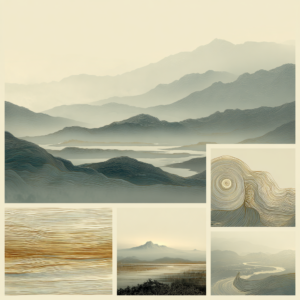
《节奏文明观|地景篇 —— 地景的学习法:用空间的节奏理解文明》
本篇探讨“地景如何成为一种学习方式”。空间具有节奏——在距离、密度与停顿中,影响我们感知记忆、行动与文明。透过阅读山河、城市与路径的节奏,我们重新理解文明如何透过身体被感受与学习。
This essay explores how landscapes become a form of learning. Space carries rhythm — in distances, densities, and pauses — shaping how we perceive memory, movement, and civilization. By listening to the tempo of mountains, cities, and pathways, we rediscover how culture is formed through the body’s response to space.
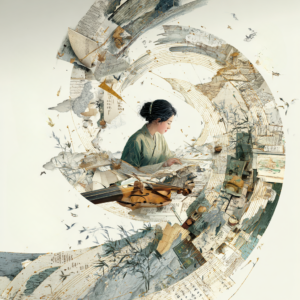
《节奏文明观|体质篇 —— 模组型体质的学习法:以节奏为师,以身体学习文明》
这篇〈模组型体质的学习法〉是我第一次认真回望,我这一生到底是怎样学习的。事实上,我的学习并不是只有直觉,也不是不用头脑,而是:身体先感到,头脑才开始理解;直觉先开门,思考随后把结构建起来。每当我进入一个陌生领域,我不是从概念开始,而是从感受与节奏开始——一旦身体抓到节奏,头脑便能迅速组织、推理、整合。无论是乐器、戏曲、香气、工艺、文学,或是楚文明的六十篇写作,我的路径始终一样:感知点亮入口,思考完成结构,文明在两者之间自动显形。我终于明白:我学习的不只是知识,而是世界如何运作。
This essay is my first honest attempt to understand how I have learned throughout my life. My learning has never been purely intuitive, nor purely intellectual. The order is simply different: the body senses first, and the mind understands afterward. Intuition opens the door; thinking builds the structure. Whenever I enter a new field, I do not begin with concepts but with sensation and rhythm—once my body catches the rhythm, my mind can quickly organize, reason, and integrate. Whether in instruments, opera, scent, craft, literature, or the sixty essays on Chu civilization, the pattern remains constant: sensation lights the entry, intellect completes the architecture, and the structure of a civilization emerges between the two. Only now do I realize that I was never learning “knowledge” alone—I was learning how the world works.

《我的人生,是一部楚居——一个非线性学习者的迁徙与文明回归》
这是一篇以《楚居》的逻辑重新阅读人生的个人叙事:七所大学、七个科系、七座城市、七种工艺、七种乐器的迁徙与学习经验。那些曾被视为“分散”的路径——学业、城市、工艺、音乐——在楚人的徙居节奏中重新排版,显现为一个非线性学习者独特的生命结构。由此展开一条“迁徙与文明回归”的路径:漂泊不再是迷失,而是一种自我命名的方式,让生命的多声部共同指向同一个根。
This essay rereads a life through the logic of Chu-Ju: seven universities, seven disciplines, seven cities, seven crafts, and seven musical instruments—each a trace of migration and learning. What once appeared as scattered paths—academia, geography, craft, and music—rearranges itself through the Chu rhythm of continual relocation, revealing the underlying structure of a nonlinear learner’s life. From this emerges a journey of migration and civilizational return: wandering becomes not a sign of being lost, but a form of self-naming, allowing the many voices of a life to point toward the same root.

